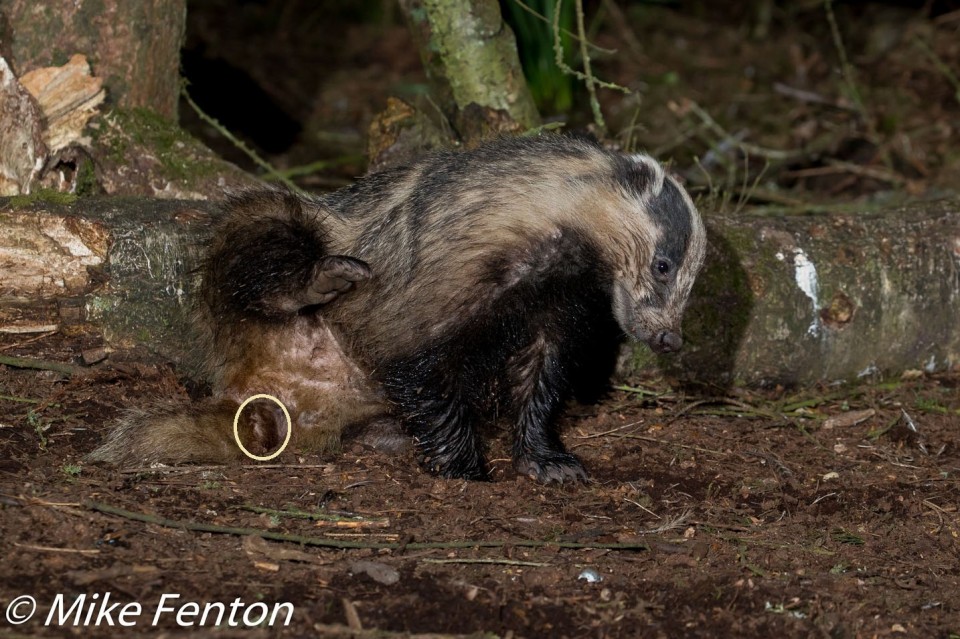European Badger Sexing

Sexing badgers in the field is often complicated by the fact that there's relatively little sexual dimorphism in this species. In other words, the males and females look similar and there are no obvious differences in the colour or pattern/markings. Probably the most straightforward way to confidently tell the sexes apart comes during the breeding season; the presence of a scrotal sac (i.e. testicles) in mature males and enlarged teats/nipples indicating a lactating female. Behaviour can also provide clues, with males more likely to act aggressively (and often more likely to be scarred as a result), while cubs may be more likely to associate with females. More generically, it is sometimes possible to separate males and females based on physiognomy. Males tend to be larger and stockier than the females, with a broader head, fuller cheeks, wider domed space between the ears, a shorter and blunter nose, and a thicker neck. Females, by contrast, tend to be sleeker, with a thinner neck and flatter head. In The Natural History of Badgers, Ernest Neal mentions wrote:
"A much more variable, but nevertheless useful characteristic is the tail, which in many males is thinner and whiter. ... [in sows it's] typically more tufty, and usually less white dorsally."
I have seen many badger watchers state with apparent confidence the sex of a badger based on these morphometrics, although I know several badger biologists that dispute this as a reliable method of sexing. Indeed, in his 1989 book The Social Badger, renowned carnivore biologist Hans Kruuk noted:
"It is extremely difficult to tell the sex of a badger just from its face; a boar is somewhat broader in the jaw, but there have been many times when I was wrong in my determined attempts to sex badgers that way. On several occasions I have had a badger in a trap and confidently told bystanders that we had caught a sow, judging by the head, only to be confronted by irrefutable evidence to the contrary after anaesthethizing the animal. Some larger boars had a quite unmistakable head, but many I found difficult to identify as males -- and I know that this happened to other acknowledged experts, too."

According to Neal, in an unpublished monograph on badger sexual behaviour, Bristol-based naturalist Robert Howard found a considerable "grey area of overlap" between the skull measurements of males and females, with only the broadest and narrowest true to sex. Similarly, studies on the variation in skull morphology by Russian Academy of Science biologists have revealed that several craniological characteristics show some dimorphism between the sexes. Variation was found in the overall skull size, the length of the lower mandible (jaw) and in the molars. The most stable characteristic was the length (to a lesser extent, the width) of the upper canines, which are significantly larger in males than females. Given the spread of their data, however, questions remain as to whether canine size is a fool-proof method of sexing a badger. Cranial measurements taken together might be more reliable, although work by the WildCRU team at Oxford University on the badgers in Wytham Woods has found that the average variation in skull size between the sexes can be of the order of half a millimetre. Such measurements can only be accurately obtained from a dead animal. So, in the words of the Devon Badger Group, "the only way to be sure is to roll it over"!
Males are referred to as boars, while females are called sows.